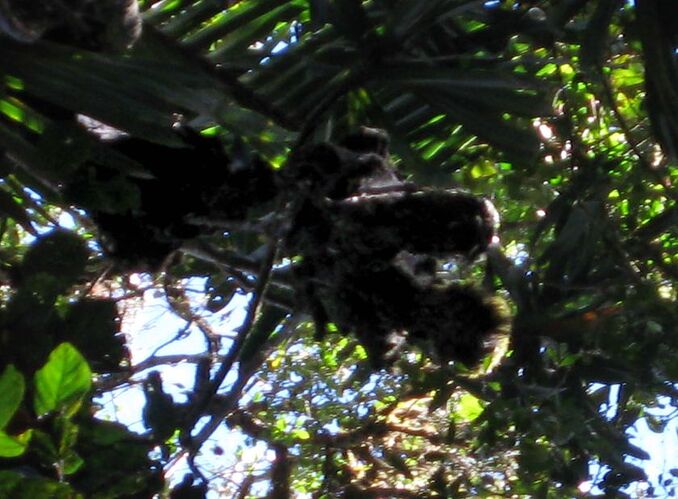…but sometimes it takes time.

from “Aachener Zeitung”, August 22nd 2008
A US command is searching world wide for missing american soldiers. Presently one team is digging on an acre near Strass/Hurtgenforest. Repatriation is the objective.
Hurtgenforest. No human being vanishes without a trace. Not even if he lies concealed below an acre for more than 60 years. Death erases life and depending on the condition of the soil the human body decomposes in no time, even metal and leather decomposes. But there are people able to read even the smallest trace. One of them is Dr. Denise To: “Every scenario requires a different course of action, no death is like the other”, she factually reports while she - a shovel in her hand- thinks about what the soil of Hurtgen forest will uncover to the forensic anthropologist in service of the US armed forces. After brief considering she says, “bone fragments”. Those have to be hidden in the earth. And pieces of metal, aliminum. Eventually the missing person was a pilot, a young officer from Texas who was shot down on November 5th 1944 during the fierce fightings in the Hurtgenforest.
“Quadruplet flak, 20mm caliber” reports contemporary witness Franz-Josef Wienands who spectates at Denise To during her excavation 64 years after the plane was shot down. A salvo of an AA battery stationed in Bogheim turned the P38 “Lightning” into a ball of fire during the war winter 1944/45, crashing at the outskirts of Strass on a stony field. After that artillery shells plowed the field followed by 60 years of agricultural utilization.
“Only bone fragments of the pilot remain” the expert conjectures and marks the next sector of excavation. In the backgroung the Hurtgenforest mounts up. Green, peaceful, introspectively. A pastoral idyll slightly disturbed by US soldiers. They’re scanning the field with metal detectors, sieving the excavated ground, sorting oxidized metal, screws and other tiny remains of the excavated High-tech fighter-bomber. The scenario looks like an archeological excavation. Every finding is documented meticulously, an accurate sketch made. As martial the death of the young man has been - the quest for his mortal remains is detailed work.
For the nine team members of the so-called “Joint-POW/MIA-command” (Jpac) this is daily routine. It’s their task to find the numerous missing soldiers of the many american assignments of war, to recover them and to transfere them to the United States. In early August some members of the team were searching for missing soldiers in Vietnam, since August 11th they dig in Hurtgenforest. A second team found a G.I. in his foxhole just the day before yesterday near the village of Vossenack - holding his position for more than six decades. “He is missing but not forgotten” says civilist Denise Ho who internalized one of the military maxims: “We leave nobody behind”. Because of that 18 Jpac-teams are on duty world wide. In Laos, Cambodia, Vietnam, Papua New Guinea, France, Belgium, Japan,…A global power fights on many battlefields. Or reworded out of military source: “We owe it to our heroes to bury them in native soil. They sacrificed themselves for the freedom we live in today.” says Sergeant Jon Couturier from the US Marine Corps.
Couturier is the head of the team in Strass, a wirily fellow as strong as an ox. His main task is to bring back home the team healthy - and because in Hurtgenforest in 2008 the former enemy is now a friend, he has the time to muck in, shovel dirt, haul buckets from the one-feet deep pit to one of the several sieves. Like all others he waits for the first crucial finding, an indication of the pilot. “Sometimes it is kind of frustrating. You get the impression to haul the dirt from one spot to another.”
Couturier is one of the leathernecks, fighting without regard on own losses. The duty in the recovery unit is no penalty to him but an honor, he volunteered. Eventually it’s all about the honor of the fallen, the honor of the country. Backed-up by a department with a budget of 53 million US-Dollar plus finest connections to the highest government offices allowing them world wide excavations even in backyards and nature protection areas.
On the stubble field near Strass the anthropologist meanwhile marks recent metal findings in the pit, a toothed wheel comes to light, little flags arranged around it. To hopes to find the remains of the cockpit. She explains, they have been lucky to find the crash site this fast, hints by the population have been very good.
“We just had an old air photograph with the wreck on it.” Sergeant Matthew Chlosta reports. An advance team interrogated contemporary witnesses and was able to localize the acre in question.
“We do what’s possible to us!” says Chlosta, August 2008 just meant Hurtgenforest. With about 78000 missing american soldiers there is work for decades left for JPAC, about 100 MIA’s are recovered per year and shipped to the USA. About 40000 G.I.s are considered “MIA” since WW2 in Europe, 8100 in Korea, 1760 in Vietnam, 120 from the Cold War era and one from the Gulf war.
In Strass nothing but pieces of debris have been found so far. No reason to surrender, Denise To is convinced. No human being vanishes without a trace. “We have to dig deeper” she says and grabs her shovel.





